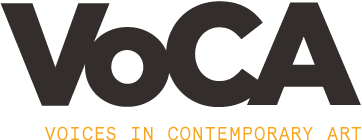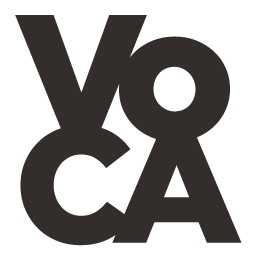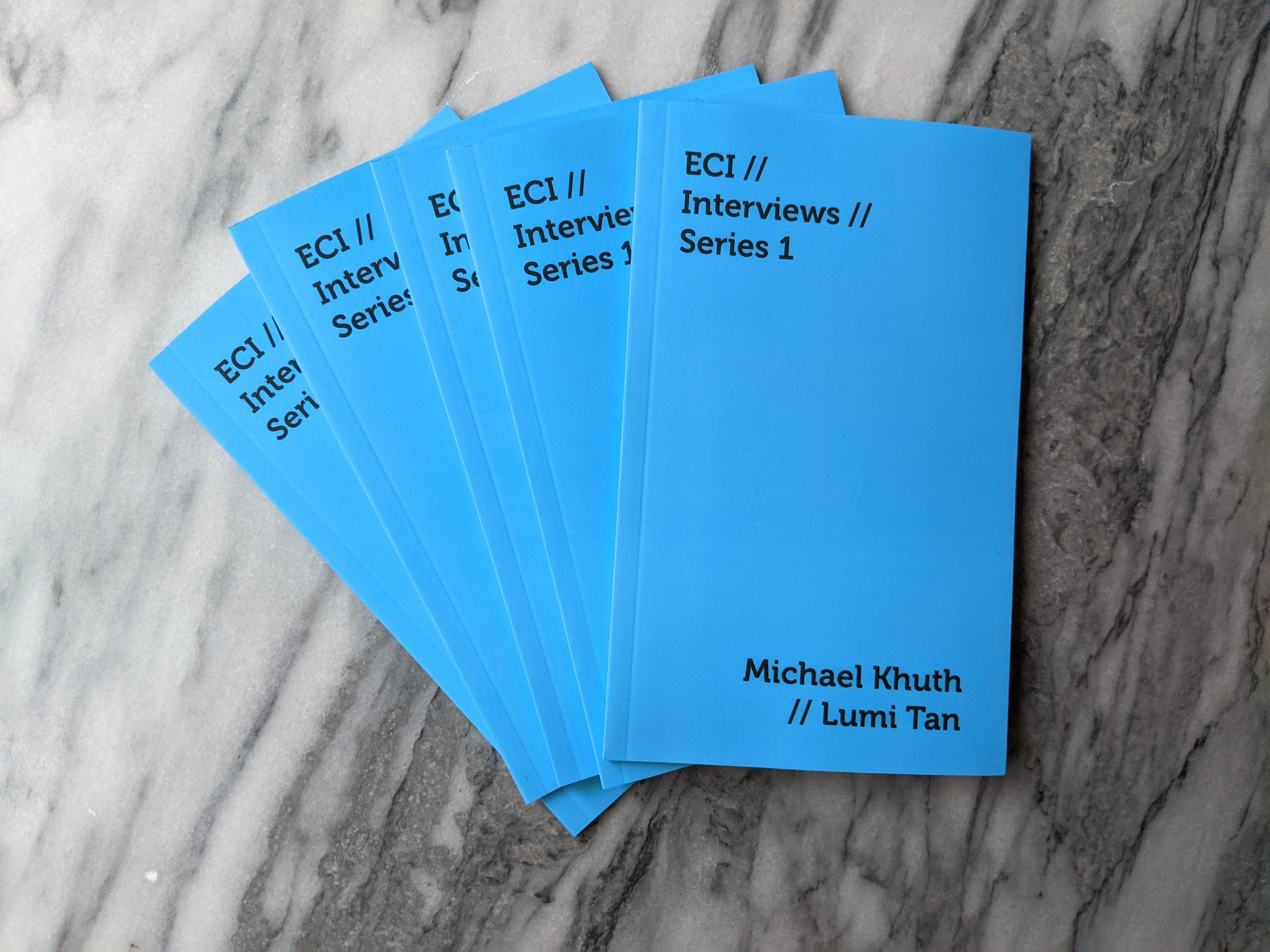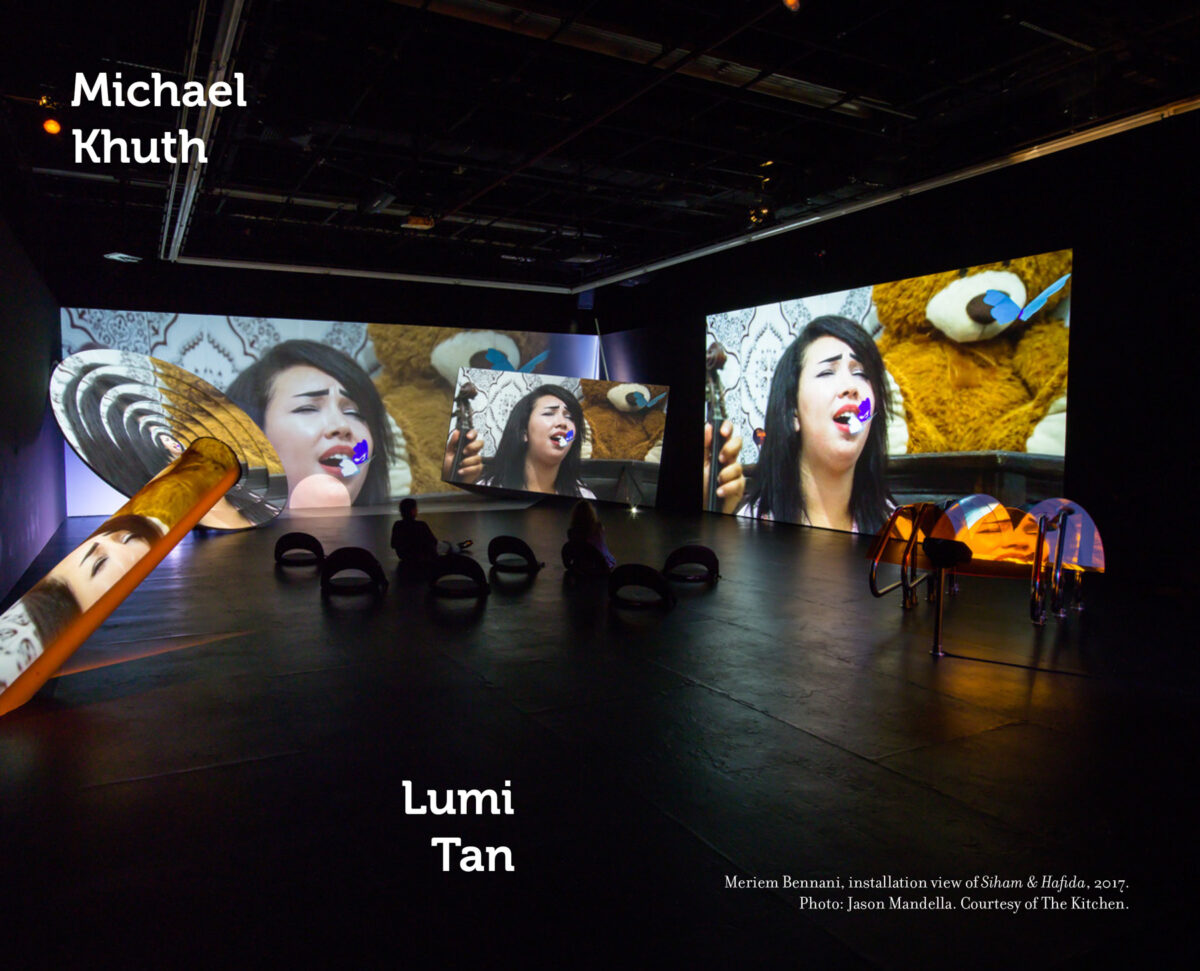Pedagogy as Practice
When I attended the VoCA Artist Interview Workshop in spring of 2020, I brought both my student- and educator-self to the program. The fact is, if you teach for long enough, you no longer enter classrooms as only a student—you also always enter as a teacher.
As a long-time educator and programmer in the full spectrum of art institutions—from the behemoth, like the Museum of Modern Art, to the miniscule, like the Emerging Curators Institute in Minneapolis—pedagogy is always on my mind. I read the experience of every course, workshop, and program on two levels: on the one hand, is the level of content. What is the meaning of the text that was assigned? How is this interview I am reading being conducted? What are the main points of this video? And so on. These are the questions of the student level. On the other hand, is the level of educator, which has its own set of questions: Why is this text being assigned? How does this text play in relationship to the other activities of the educator? Simply put: What is the teacher asking us to do and why?
Sit in enough classrooms as a teacher and you also can feel when learning is happening. You can feel thought; you can feel rapport. Many teachers talk about the joy of seeing the “lightbulb moments” of students, and this is what they are referring to—a kind of knowledge that is embodied, sensed only through subtle changes, like a slowly shifting wind.
Learning is not, of course, a one-to-one practice generally, but takes place amongst many others: It is a social phenomenon. Similarly, if learning with a group of students is successful, there is a moment in teaching where the tide of the class shifts, where students and teacher start moving together. Students open up; ideas flow freely; challenging questions are posed. The class thinks together.
This is felt too, although it is not an easy feeling to describe. As a long-time Midwesterner, the closest analogy I have for it is the embodied knowledge of the coming of a summer storm—everything grows taut, a sudden coldness grips the air, the wind dies to nothing, as the colors of the sky transform to strange muddied greens and browns. All of the senses and understanding point to it. You can’t name it, you simply know it: A torrent is on its way.
As a member of the spring 2020 VoCA workshop cohort, I felt this storm. Going through the few days of the workshop the shift to the downpour of ideas was apparent. If this all sounds rather mystical, well, it is because it often feels that way, too. But this transportive experience does not occur by happenstance. It happens through sound pedagogy.
For me, pedagogy is the beating heart of VoCA. The various channels of VoCA—workshops, programs, and publication—are at their core all related to teaching. Moreover, VoCA’s tools, strategies, methods, and understandings are all fundamentally educational. Even the Artist Interview Workshop—which is VoCA’s signature program—is structured through a format that is fundamental to the practice of radical education: the dialogue.
In what follows we will look more closely at VoCA methodology, paying particular attention to the overlaps between VoCA practices and pedagogy, because if we can better understand how and why VoCA works, we can better understand how to do what VoCA asks of us—to listen intently to artistic voices of our time.
***
While it is impossible to recreate the full experience of a VoCA workshop on paper, we can gather some components of it and look at how pedagogic thinking connects with VoCA interview practice. In the VoCA workshops, one of the handouts for interviewing artists contained a set of ten pithy takeaways. If we were to create a set of ten takeaways for best art teaching practice—with slight alterations—almost all of these would appear on that list. They are worth repeating in full:
-
- Know thyself.
- Do your research.
- Know your equipment, environment, and context.
- Silence is your best friend.
- The interview is a dialogue.
- The interview is also a constructed conversation.
- There is NO master “list of questions.”
- People aren’t information machines: you can’t just push a button and have the “right” answer come out.
- Works of art or photographs can trigger memories.
- Build long-term relationships.
The most important point here, for me, is the fifth one, “The interview is a dialogue.” The majority of the methodology of VoCA, working to support artists voices, and sound pedagogy is structured around the complex idea of dialogue. So, what is dialogue? Why does it matter? And what does it mean for supporting the work of artists?
In Teaching in the Art Museum: Interpretation as Experience (2012), Rika Burnham and Elliot Kai-Kee—pioneers in the history of art museum education—outline a model for teaching through art objects using dialogue at its core.1 They start out their explanation of dialogue by juxtaposing it with two other modes of communication: conversation and discussion. Conversation is the airiest of the modes—casual, carefree, even wandering. It has no goal but the simple joy of communicating with another. Conversations may be pleasurable, but they are rarely edifying. Discussion, on the other hand, is highly structured and seeks to present opposing viewpoints in a sort of metaphorical battle over truth. It is, as Kai-Kee and Burnham note, “teleological,” as there is always an end goal and a concrete outcome sought in discussion. Its nearest cousin is debate, and its most common occurrence is in the high school classroom or the floor of the senate.
If conversation is on one side of the spectrum of communication and discussion is at the other, dialogue is between them. Dialogue is open to acts of improvisation, but does so through an underlying structure. Dialogue is a form of thinking together in speech.
The VoCA workshops introduce dialogic modalities by having students experience and practice with the form together. At three instances during the workshops, students are asked to conduct paired interviews on different topics: an introductory interview, where you interview a partner learning who they are; a historical interview, where you interview a partner based on a life event; and an object focused interview, where you interview a partner wherein they had to describe an object that was unseen. I remember all of these experiences clearly and the conversations shared with my partner.
From the first practice introductory interview, the conversation between VoCA educators, and my ideas written in my brief notes, combined my memory is instructive. The VoCA educators ask: “Looking back at the interview process, was there a point when the conversation shifted?” My notes say simply, “Speaking in similar languages, passion of space.” This speaking in similar language is the moment of thinking together. I recall distinctly as well the element of passion–of a shared curiosity of one another brought about through linked cares.
A key component of dialogue is its relationship to time. While thinking can occur occasionally as a lightning bolt, it most often happens slowly and accretively. When you ask someone a question it takes time to generate an answer, so it is important to give them space to pause, process, and respond without jumping to fill the silence. Dialogue is patient with time. A way this patience is manifested is in its relationship to silence. As VoCA notes, “#4: Silence is your best friend.” Silence is also a vital part of teaching.
One of my favorite texts to assign new educators is a chapter from the book Classroom Confidential: The 12 Secrets of Great Teachers, entitled, “Secret #5: Great Teachers Don’t Take No (Or Yes) for an Answer.” The purpose of the text is to get emerging educators to begin to build their teaching methodology into an inquiry-based approach that more actively follows the lead of students. Like a solid interviewer is trying to do with an artist, inquiry-based styles of teaching work to get students thinking through questions. Fittingly, the text contains a line that is near verbatim what VoCA recommends: “Researchers studying wait time discovered that when teachers ask a question, they get nervous if they don’t hear an answer within three seconds [….] If you want inquiry to work, you must quell the urge to fill the void, because silence is your friend [my italics].” New educators and new interviewers—and poorly-trained versions of both—rush. The weight of silence is a burden that is too heavy. While silences are awkward in conversation or may show weakness in discussion, they are necessary in dialogue. Being comfortable in the silence of dialogue allows for fuller thinking.
Another component that makes for successful dialogue is understanding that “#8: People aren’t information machines: you can’t just push a button and have the “right” answer come out.” Dialogue does not work as a system of crass exchange—looking to extract factoids from people—it sees both parties as having something to contribute and build over time.
In the VoCA workshops, the educators warned of a similar issue, in particular against canned narratives–the kind of stories that are always told because we are “conditioned to think of the elevator pitch”–that can arise in interviews. Their advice was useful, recommending interviewers to return with questions: “I know you have told the story…I would love to know when did you first tell that story? What makes that story important to you?” This allows for the conversation to be less extractive and more open to new terrain.
An important pedagogical text in relation to this notion is found in the work of Paulo Freire—a Brazilian-born educator, whose primary mode of teaching, what he termed “dialogic,” is at the core of radical pedagogy. The best-known text of Freire’s is Pedagogy of the Oppressed,2 in which he worked against what he called “the banking model” of education. The banking model treats students simply as vessels to be filled—information machines—that you can later press a button on to receive the “right” answer. For Freire, teaching in this way was dehumanizing because it did not see that all students come to a classroom with values, thoughts, and relevant inputs into the topics at hand. Dialogic teaching, rather, understands this base of knowledge students bring to the classroom as equally valuable, if not more so, as what the teacher is bringing. In fact, dialogic teaching uses student understanding as the foundation for the knowledge being constructed over the course of the learning. A sound interviewer scaffolds questions much in the same way, slowly building a narrative through the words of the interviewed.
New teachers and interviewers often get bogged down with the idea that they can come up with a perfect list of questions that will lead to the same successful outcomes for every classroom or interview.3 Dialogue, however, requires flexibility and an improvisational openness to the words being spoken by a student or interviewee; it asks that we truly listen to the person we are speaking to. Importantly, in dialogue an interviewer or educator has to listen in such a way so that the other person can speak fully.
The most oft-cited education version of this is active listening versus passive listening. In active listening, a person listens not only intently but responds over the course of the dialogue in movement with the speaker. They may do this through multiple means such as repeating back what they hear in summary form to the speaker, asking follow-up questions, or presenting certain body language cues to demonstrate interest. Passive listening, on the other hand, involves listening but without engaged response.
As was noted in the VoCA workshop, one also has to be aware of the ways—socially and culturally—different people listen. One example that was cited as a culturally specific form of listening was the practices of “cooperative overlappers.” In cooperative overlapping, listeners speak over or fill in parts of conversation for the person speaking. While in some cultures this is considered extremely rude—essentially just a form of interrupting—in others it is read as a form of active listening.
This last point is incredibly important: Dialogue does not take place neutrally. Likewise, education is not neutral and interviews are not neutral. Dialogue occurs between people—people with their own lived experiences, histories, backgrounds, and bodies that cannot be ignored. As oral historian Robin Li noted in the workshop, you have to take into account, “the power dynamics of the space you are in,” and those dynamics are built through race, class, gender, (dis)ability, and more. We cannot leave behind who we are when we engage in dialogue—instead, it is in engaging who we are that makes dialogue meaningful.
***
When I applied to attend the VoCA Artist Interview Workshop, I had an intuitive sense that there were overlaps between pedagogical thinking and the frameworks of VoCA. It was clear after going through the program that the main bridge between them was dialogue. Since leaving the Workshop, I have often circled back to thinking of this as well as to the original questions that guided applying in the first place, and have folded over these learnings into my own practices, moving from a VoCA student to a VoCA-trained educator.
In addition to my current role at the Museum of Contemporary Art Chicago, for the past few years I have been with the Emerging Curators Institute (ECI) in Minneapolis as Co-Director, Education and Public Programs. ECI supports emerging curators from diverse backgrounds through a fellowship program consisting of in-depth research, professional development, and presentation program. In joining the program I wanted to ensure that fellows produced projects that could move their professional lives along, but also ones that were creatively fulfilling.
In line with this, for the last two years I have had the fellows produce a published interview during their time in the program. For the project, each fellow selects a more “established” curator—someone they respect but do not know—and asks to interview them. To prepare them for this, I bring over the lessons of VoCA about structuring the interview as a dialogue. In the current year’s cohort, I have also included direct experiential learning components that were vital to my experience in VoCA, including practicing interviewing one another as they recount a story from memory. Through the project, the fellows of ECI have been the beneficiaries of VoCA as much as I have.
In this project, fellows have interviewed engaging, critical, thought-provoking curators like Lumi Tan, Candice Hopkins, and Nicole Burisch—released in digital and print-on-demand publications with another round of interviews to be released soon. Tan is Senior Curator at the Kitchen, a space whose artists often overlap between performance and exhibitions-based methodologies; Hopkins is the Executive Director and Chief Curator of Forge Projects, who is best-known perhaps for expanding the voices of Indigenous artists through her work in the curatorial team of documenta 14; Burisch many projects include publishing The New Politics of the Handmade: Craft, Art, and Design (2020), which articulated a radical reimagining of the interlinking between craft and other forms of creative practice.
The emphasis of the interview as dialogic form can be seen in the interviews themselves, which foreground techniques of close listening and improvisation. Take for instance emerging curator Michael Khuth’s interview with Lumi Tan. During the end of the interview, Khuth asks Tan how she knew she was going to be a curator. She answers in part: “[…]I don’t think there was a day at PS1 where I wasn’t in crisis. I discovered that I was good at dealing with those crises. Some people get so caught up in the drama of these problems that they can’t see any way to move through them and get stuck. Being a good curator has to do with being fluid […]” And Khuth responds off-script, fully in the moment: “Where would you say that ability to think on your feet and embrace being “fluid” in your work comes from?” This in turns opens up Tan, offering rich insight into the core of who she is:
It’s not something I understood until I got older. Looking back on my teenage years, my early professional life, and everything I did in between, I was always asking myself, ‘What is an experience I haven’t had?’ or ‘What is something I know nothing about?’ I had this mentality of throwing myself into situations where I was doing something for the first time and didn’t know anyone. That’s not to say that I never totally failed, but I managed to see the humor even in the darkest moments. I wouldn’t say that I consciously did that, but I do think that some of that energy came from having lived in the suburbs and feeling bored. I was always like, ‘There is something else out there.’ There was always this other thing that I was looking for. I was restless. I’ve come to realize that I can get through difficult situations while understanding I’ve learned a lot on the other side. Despite a lot of social anxiety I had growing up, I don’t have a lot of fear—I have no idea where that came from!
What this project at ECI encapsulates for me is another important pedagogical feature: as educators we can never know the full scope of impact of our work. Most pedagogues want to trace a program’s impact; in education though, the unseen ripples of a program are often not linear—they operate in a different time frame, in a different scale, and with different dimensions. The topography of educational waves, simply put, is hard to decipher. And this is the case with teaching in VoCA too, who through each cohort sends out signals of stewardship, strategies of care, and questions of artistic practice across the field.
While the totality of this output can never be measured, as VoCA returns to its past ten years and points to the future, we would be wise to heed its call: that foregrounding artists can only happen through the spirit of pedagogy—a spirit whose name is dialogue.
1 Burnham and Kai-Kee present dialogue as a mode of communication that isn’t grounded exclusively or even principally in questions, unlike most other forms of radical and Socratic forms of education. This fact, though not fully explored here, has major implications for artist-based interviews.
2 Interestingly, while Pedagogy of the Oppressed is his best-known text, Freire’s publishing practice in his later life consisted principally of transcribed conversations between himself and others, bringing dialogue full-circle into praxis.
3 As VoCA also mentions, “#7: There is NO master “list of questions.”
Works Cited
Schmidt, Laurel. Classroom Confidential: The 12 Secrets of Great Teachers. Portsmouth, NH: Heinemann, 2004.
Freire, Paulo. Pedagogy of the Oppressed. New York, NY: Continuum, 2003.
Burnham, Rika and Elliot Kai-Kee. Teaching in the Art Museum: Interpretation as Experience. Los Angeles, CA: Getty Publications, 2011.
Main image
Printed publications of Michael Khuth and Lumi Tan Interview.
ECI Interviews Series Volume 1. Minneapolis, MN: ECI Press, 2021
Image description
A photograph of five bright blue booklets with black text fanned out on a white and gray marble background. Each book has the text “ECI // Interviews // Series 1” on the top left corner and “Michael Khuth // Lumi Tan” on the bottom right.




